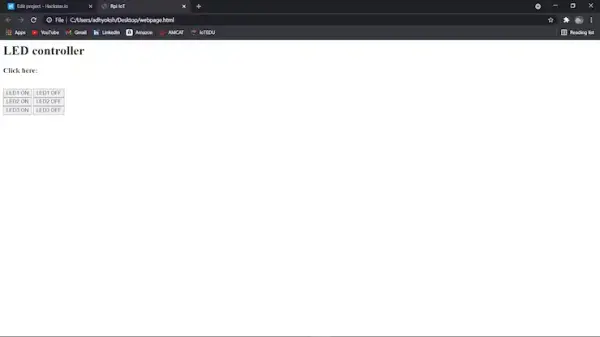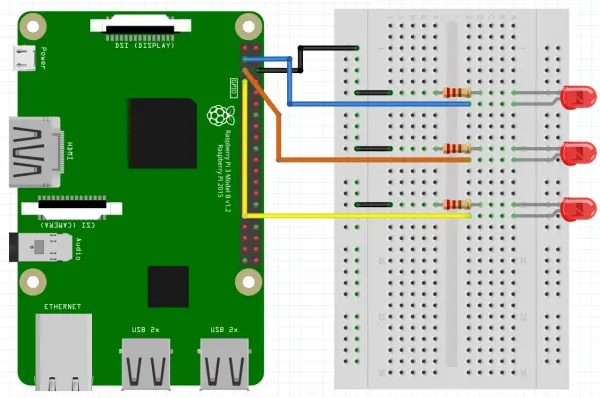from flask import Flask
from flask import render_template
import RPi.GPIO as rpi
import time
app= Flask(__name__)
led1,led2,led3= 3,5,7
rpi.setwarnings(False)
rpi.setmode(rpi.BOARD)
rpi.setup(led1, rpi.OUT)
rpi.setup(led2, rpi.OUT)
rpi.setup(led3, rpi.OUT)
rpi.output(led1, 0)
rpi.output(led2, 0)
rpi.output(led3, 0)
print("Done")
@app.route('/')
def index():
return render_template('webpage.html')
@app.route('/A')
def led1on():
rpi.output(led1,1)
return render_template('webpage.html')
@app.route('/a')
def led1off():
rpi.output(led1,0)
return render_template('webpage.html')
@app.route('/B')
def led2on():
rpi.output(led2,1)
return render_template('webpage.html')
@app.route('/b')
def led2off():
rpi.output(led2,0)
return render_template('webpage.html')
@app.route('/C')
def led3on():
rpi.output(led3,1)
return render_template('webpage.html')
@app.route('/c')
def led3off():
rpi.output(led3,0)
return render_template('webpage.html')
if __name__=="__main__":
print("Start")
app.run(debug=True, host='192.168.1.57')



